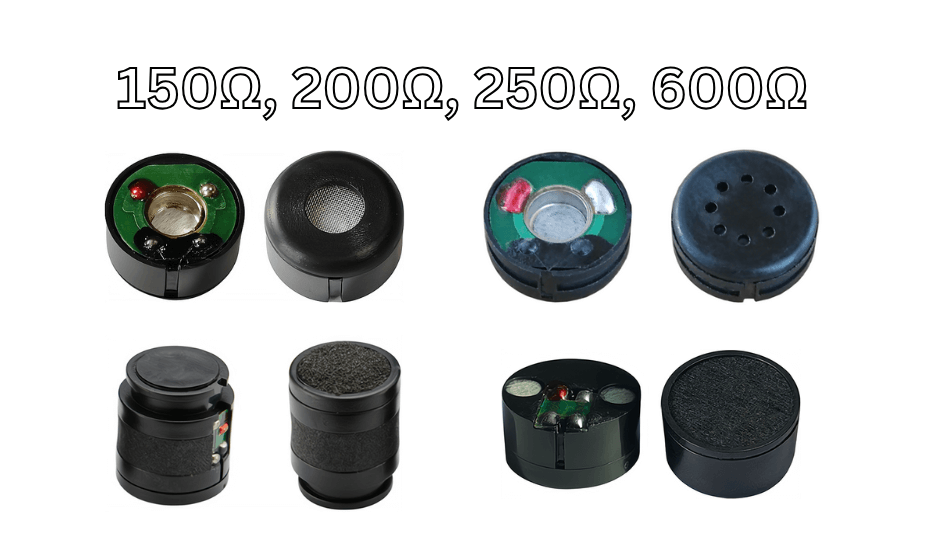
Explore how different microphone impedance levels affect performance and how to choose the right one for your audio products.
Understanding Microphone Impedance
Microphone impedance refers to the resistance a microphone offers to the flow of an electrical signal, measured in ohms (Ω). It plays a crucial role in determining signal clarity, compatibility with audio equipment, and overall system stability. For manufacturers and engineers working on audio products—whether it’s for communication headsets, broadcast microphones, or intercom systems—impedance should never be an afterthought.
From 150Ω to 600Ω: What Makes Each Impedance Level Unique?
Dynamic microphone capsules are available in several impedance levels to accommodate different system requirements. The most common among them are 150Ω, 200Ω, 250Ω, and 600Ω. Each has distinct performance characteristics and is suited to specific applications.
The 150Ω variant is widely used in professional audio applications. With low resistance, it works well with modern mixers, amplifiers, and audio interfaces—especially in environments like KTV rooms in Southeast Asia or live stage setups in Europe. Its low impedance ensures minimal signal loss and clean sound transmission, even with long cables.
Moving up, the 200Ω capsule offers a balanced performance that makes it ideal for general-purpose systems. Many intercom systems in North American schools and hospitals, as well as paging systems and point-of-sale terminals in Europe, are designed to accept microphones in this range. It provides a good blend of stability and flexibility without the need for special tuning.
For more specialized equipment, 250Ω capsules come into play. These are often used in custom-built two-way radios or industrial headset systems, especially in Latin American markets or noisy working environments like airports. The slightly higher impedance helps reduce unwanted interference and improves compatibility with custom circuitry.
Finally, the 600Ω microphone capsule is typically used in legacy or military-grade systems. Its high impedance is well-suited for long cable runs and legacy analog devices, such as those still found in U.S. government or aviation communication systems. Some brands also prefer it when recreating retro-style audio products that demand a classic electrical profile.
How to Make the Right Choice
Selecting the right impedance depends on your product’s input specification, signal path length, and the type of audio content being captured. If your system operates with modern amplifiers and short cable distances, 150Ω or 200Ω will likely suffice. On the other hand, applications involving older hardware or demanding environments might benefit more from 250Ω or 600Ω solutions.
It’s also important to ensure proper impedance matching to avoid issues like signal degradation or audio distortion. For OEM and ODM projects, consulting with the microphone supplier during the design phase can prevent costly engineering changes later on.
What We Offer
We manufacture and supply dynamic microphone elements across the full impedance spectrum—from 150Ω to 600Ω. Each capsule is produced under strict quality control, with impedance consistency maintained within tight tolerances to ensure stable mass production. Whether you need components for telecom headsets, karaoke systems, or classic broadcast devices, we can support your custom requirements with quick sampling and reliable delivery worldwide. Explore dynamic microphone capsules tailored for OEM applications.
Understanding and selecting the right impedance is essential to building a high-performance audio product. From OEM communication devices to professional microphones and legacy system replacements, matching the right microphone element to your application is key. If you’re unsure which impedance fits best, our team is ready to assist.
Contact us today to discuss your project or request a sample for testing.


